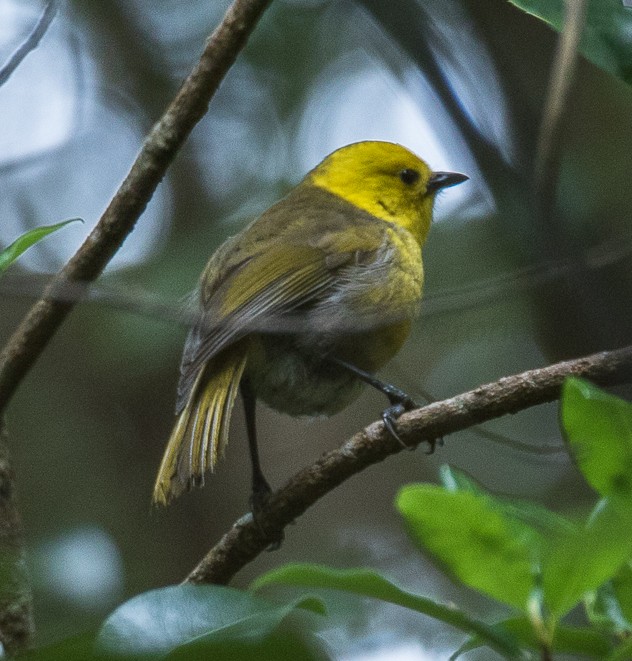Yellowhead
A species of Mohoua Scientific name : Mohoua ochrocephala Genus : Mohoua
Yellowhead, A species of Mohoua
Botanical name: Mohoua ochrocephala
Genus: Mohoua
Content
Description General Info
 Photo By Francesco Veronesi , used under CC-BY-SA-2.0 /Cropped and compressed from original
Photo By Francesco Veronesi , used under CC-BY-SA-2.0 /Cropped and compressed from original Description
The yellowhead or mōhua (Mohoua ochrocephala) is a small insectivorous passerine bird endemic to the South Island of New Zealand. Once a common forest bird, its numbers declined drastically after the introduction of rats and stoats, and it is now endangered. 
Size
15 cm
Nest Placement
Cavity
Feeding Habits
Yellowhead primarily eats insects, supplemented with small fruits and nectar. They forage in the forest's middle to upper layers, rarely on the ground. Yellowhead gleans prey from foliage, trunks, and branches, often holding food with their feet. They forage alone or in mixed-species flocks, utilizing scanning and gleaning as key methods.
Habitat
The yellowhead primarily resides in native southern beech forests characterized by sparse undergrowth. These forests typically consist of large, continuous expanses of mature trees, providing the necessary environment for the yellowhead's survival. While historically found in podocarp-hardwood forests, its presence in such habitats has significantly declined since the early 20th century.
Dite type
Insectivorous
General Info
Feeding Habits
Bird food type
Distribution Area
The yellowhead and the whitehead have allopatric distributions as, conversely, the latter is found only in the North Island and several small islands surrounding it. Although abundant in the 19th century, particularly in southern beech forests on the South Island and Stewart Island/Rakiura, mōhua declined dramatically in the early 20th century due to the introduction of black rats and mustelids; nesting in tree holes makes them more vulnerable to predators. Today they have vanished from almost all the South Island's forests, and exist in less than 5% of their original range. On the mainland South Island there is currently a small population of mōhua in the Marlborough Sounds and around Arthur's Pass, but a quarter of the population lives in the beech forests of the Catlins. The total number of mōhua is about 5000. 
Species Status
In New Zealand, mōhua have the status of a protected threatened endemic species. Conservation efforts are being made to ensure its survival and mōhua populations have been established on several predator-free offshore islands, such as Breaksea Island in Fiordland and Ulva Island. Birds have been captive-bred at Orana Park in Christchurch. In 2003, 39 mōhua were translocated from Breaksea Island to predaror-free Whenua Hōu / Codfish Island, and more were introduced to Whenua Hōu from the Catlins in 2018, increasing the island's population to about 1000. More releases are planned to islands in Fiordland. Pest control efforts by the Department of Conservation have managed to stabilise some mainland mōhua populations. For example, where biodegradable 1080 poison was used to control rats in the Dart valley, there was a more than 80% survival rate, compared with just 10% in untreated areas. The population of mōhua in the Landsborough valley has increased four-fold since 1998, thanks to an intensive programme of pest control, including aerial 1080. The population is now strong enough for birds to be transferred out to establish a new population on Resolution Island. Similar aerial 1080 operations in the Catlins and the Hurunui, Hawdon and Eglinton valleys have had equally encouraging results. DOC and TBfree New Zealand accounted in March 2014 a significant repopulation in the Catlins of other avian species, including bellbird and tomtit, due to the reduction in predators. 
Scientific Classification
Phylum
Chordates Class
Birds Order
Perching birds Family
Australasian warblers Genus
Mohoua Species
Yellowhead